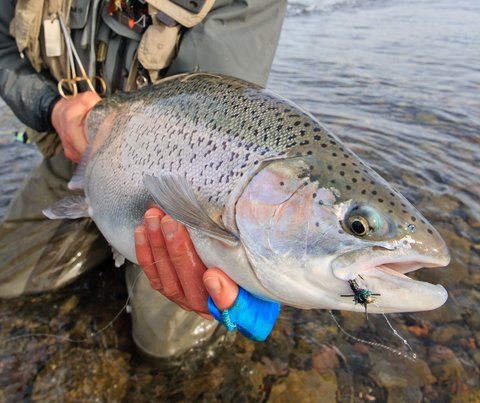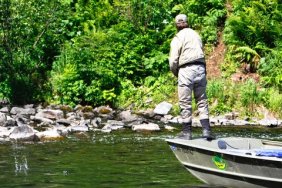
Whether you’re going after stocked trout or wild trout in your local streams, the trick to catching a monster trout comes down to thinking like a fish. A fish doesn’t care about a majestic setting or whether you look like Brad Pitt with a fly rod. A fish cares about food, water and shelter – much like us in simpler days. To hook a great big “hold-over” means you have to think like a gilled creature. Here are 5 ways to catch a monster trout.
Uglier the better
The first step to any fish outing is to choose a location. Most people shy away from places that do not appear nice, but to a fish it doesn’t make any difference. That ugly stretch of river might be the place fish have discovered people don’t like to go. Getting off the beaten track and fishing unsightly areas are good first steps to catching a monster.
Coldwater
Fish also pay attention to water temperatures and trout are a cold water fish. Look for streams in the springtime that hold their cooler temperatures such as those with steep canyons on either side. Also under highway bridges are not only cool places but also ones unlikely to be over-fished.
Oxygen
Fish need oxygen in the water to survive. Hold-over trouts are more likely to survive in ponds with high oxygen levels, which means good circulation. Look for areas with swift water speed where the current is broken somehow. Riffles, plunge pools, bottlenecks and water falls are good places to choose especially where the bottom is rocky.
Local bugs
Fish of course also need food. A look around at the local insect population can tell you a lot about what lies beneath the surface. Turn over a few rocks and take a look. Cast your gaze over the surface of the water and look for activity. This doesn’t mean you have to fly fish but it could be an indicator that the monster trout you’re after might be near.
Jighead
Monster trout like to eat crayfish and sculpin that lie on the bottom. To mimic this behavior try using a curly-tailed grub on a 3⁄8-ounce jighead. But take it a step further and tie on a 3-inch bunny strip with a few strands of gold or silver tinsel and some natural elk or rabbit hair and coat the wraps with clear nail polish. This will make the jig shine when it’s slow-hopped in deep pools, mirroring the action of crayfish and sculpin. This helps also to separate the big ones from the little guys as the smaller trout will just nip the bunny strip.








